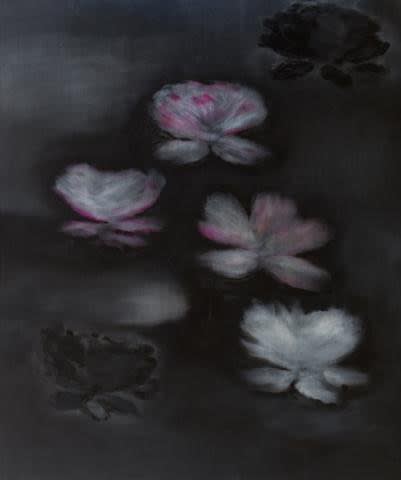Bleckner explores the space where the architecture of place meets the architecture of the sky—revealing phenomena of paint and light—in an oeuvre teetering between a call for salvation and a silent abyss. It is this philosophical query around the physical and the absent that animates Bleckner’s newest artworks. They are activated through a tension between materiality, physicality, and the sublime.
Recent abstract landscapes are both a natural evolution of his painting process and a summary of historical paintings from the past sixty years. Engaging in this neo-romantic landscape tradition, the works present tranquil and serene visions driven by color and composition. The wide variety of flower works continues Bleckner’s examinations of landscapes, abstraction, and the history of art. Bleckner draws upon the deep symbolism of flowers seen over diverse time periods and geographic locations.
Central to the artist’s practice is the layering of paint onto the canvas and then subsequently scraping it away—a perpetual process of creating and editing, adding and subtracting. Blecknercompares his creative process to the manner in which an architect constructs a building. He achieves a depth of color by gradually layering paint onto the canvas. For example with his series of bird compositions, at one point in the creative process, the surfaces are entirely covered in paint, until Bleckner carves the birds out of the accumulated layers. The birds are defined by their absence.
Born and raised on Long Island, Bleckner is a native New Yorker who splits his time between the city and the country. He studied at New York University, where he now teaches. Several of his art works are in the permanent collections of New York’s Museum of Modern Art, the Whitney Museum of American Art, and the Guggenheim Museum.
Curated by Peter Doroshenko, Executive Director

